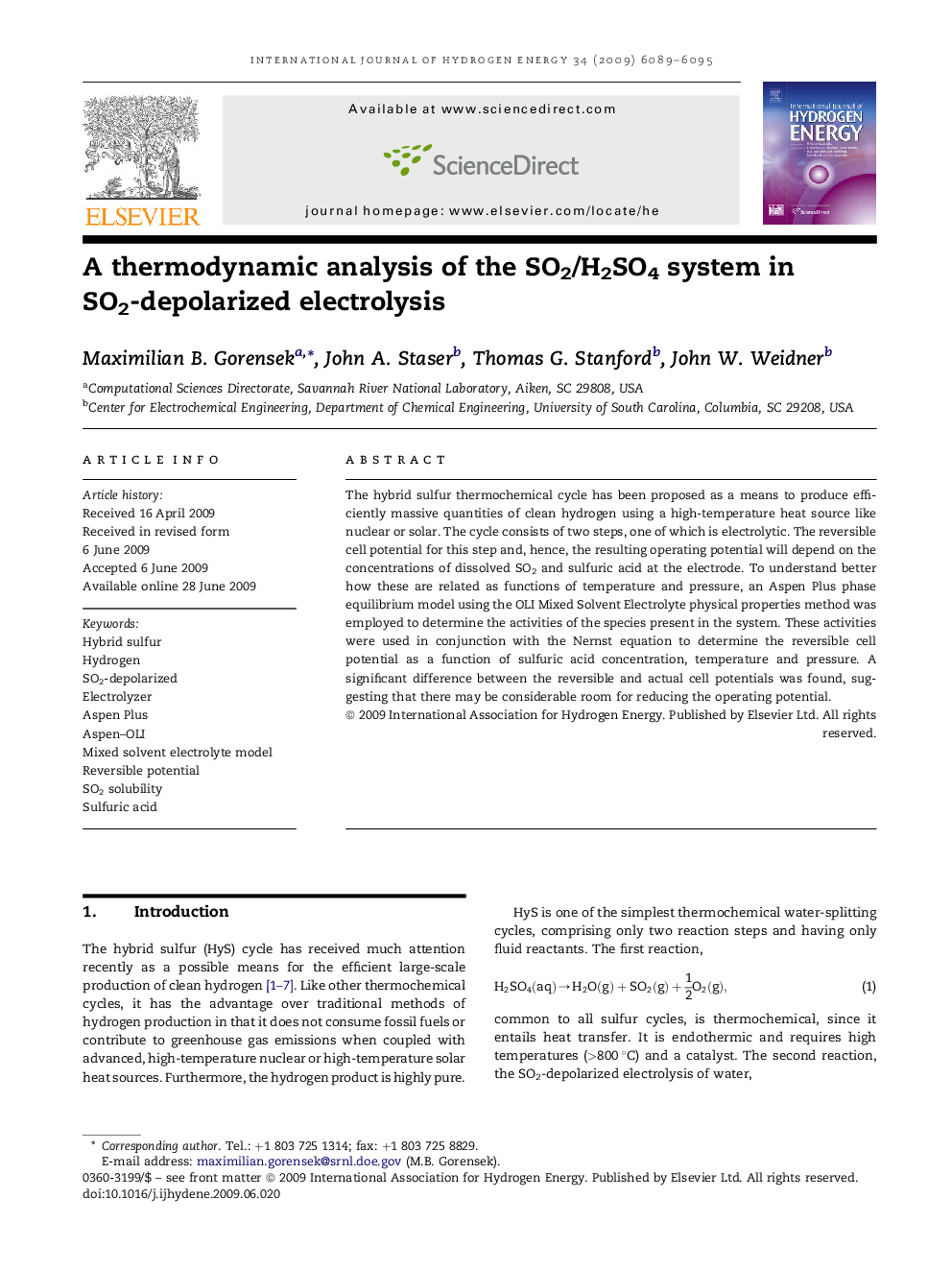| Article ID | Journal | Published Year | Pages | File Type |
|---|---|---|---|---|
| 1283117 | International Journal of Hydrogen Energy | 2009 | 7 Pages |
The hybrid sulfur thermochemical cycle has been proposed as a means to produce efficiently massive quantities of clean hydrogen using a high-temperature heat source like nuclear or solar. The cycle consists of two steps, one of which is electrolytic. The reversible cell potential for this step and, hence, the resulting operating potential will depend on the concentrations of dissolved SO2 and sulfuric acid at the electrode. To understand better how these are related as functions of temperature and pressure, an Aspen Plus phase equilibrium model using the OLI Mixed Solvent Electrolyte physical properties method was employed to determine the activities of the species present in the system. These activities were used in conjunction with the Nernst equation to determine the reversible cell potential as a function of sulfuric acid concentration, temperature and pressure. A significant difference between the reversible and actual cell potentials was found, suggesting that there may be considerable room for reducing the operating potential.
